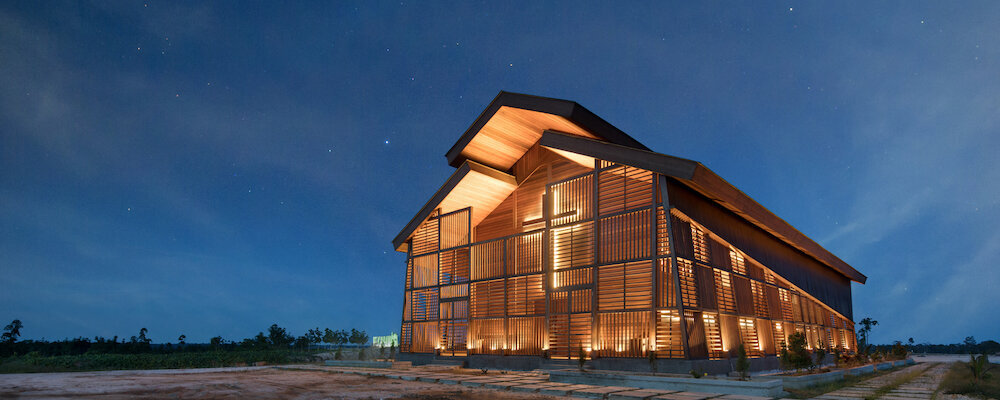The Omah Boto House or the art collaborative architecture
In Sidoarjo, part of the East Java province of Indonesia, a new house has brought together the creativity of an architect and the expertise of local craftsmen.
To match the client’s desire to “bring up Indonesia vibes in the house”, Andyrahman Architect applied their usual policy of working flow with local craftsmen.
In the Omah Boto project, craftsmen are invited to be a collaborative partner during the architectural process, so they can feel like a subject that determines the success or failure of the design on the field. They had to re-emerge their spirit as a ‘designer’.
The site location is near to the Pari Temple and Sumur Temple, Sidoarjo, East Java. It reopens the great features of red brick material. East Java, in particular, has a red brick architecture history since the Majapahit Kingdom era which is the materials basic and manufacturing techniques are still inherited to the current craftsmen in Trowulan Village, red brick home industry.
Bricks in Omah Boto became the main element and processed holistically, even as a gene or cell of the building. The brick dimension (5x10x20 cm) is the main measuring standard for all architectural part of Omah Boto such as sill height, door or window width, and even the room area.
So, this is the reason why this house was named Omah Boto, which means Brick House that combined with other Nusantara elements using bamboo, wood, rattan, etc. The existence of this variation forms an inter-material dialogue of Indonesian characteristics.
In addition, some of the brick arrangement in this house is taken from Batik motives. The Parang and Pucuk Rebung motif are used for wall and floor brick tectonics, Kawung motif on bathroom ceramics, and many else. These patterns or motives applied in this house were obtained from Andyrahman Architect’s experiments. It brings back the main reason of brick usage since the ancient times that has an interesting rhythm and character on its arrangements. The 13th brick pattern in Omah Boto is built with tectonic techniques that require high accuracy. It was all about visual communication between the architect and craftsmen. These 13 tectonic brick constructions are the factor that combines the design precision and ingenuity of the craftsmen who understands the material’s character and quality.
Musholla (prayer room) as a sacred area in this house is a contextualisation of the ‘Garbhagrha’ / ‘Guwagarba’. It is applied in the floor, the wall, and the ceiling with brick construction. It reminds people of their origin and purpose of life in the world. The outer skin of this building is a transformation from ‘Gedheg’, Indonesian hollowed woven bamboo. It is implemented as red brick skin façade, designed to reduce glare, maximizes airflow while maintaining the homeowner’s privacy. This brick tectonic also creates the fourth dimension inside the house along with daylight.
Based on Andyrahman Architect’s experiences, a detail that was made out of collaboration with craftsmen can create a tremendous effect. The design results have more values that different from other designs. Omah Boto brought back the spirit of craftsmanship and admiring the contemporary of Nusantara Architecture.
Pictures courtesy of Mansyur Hasan.
















